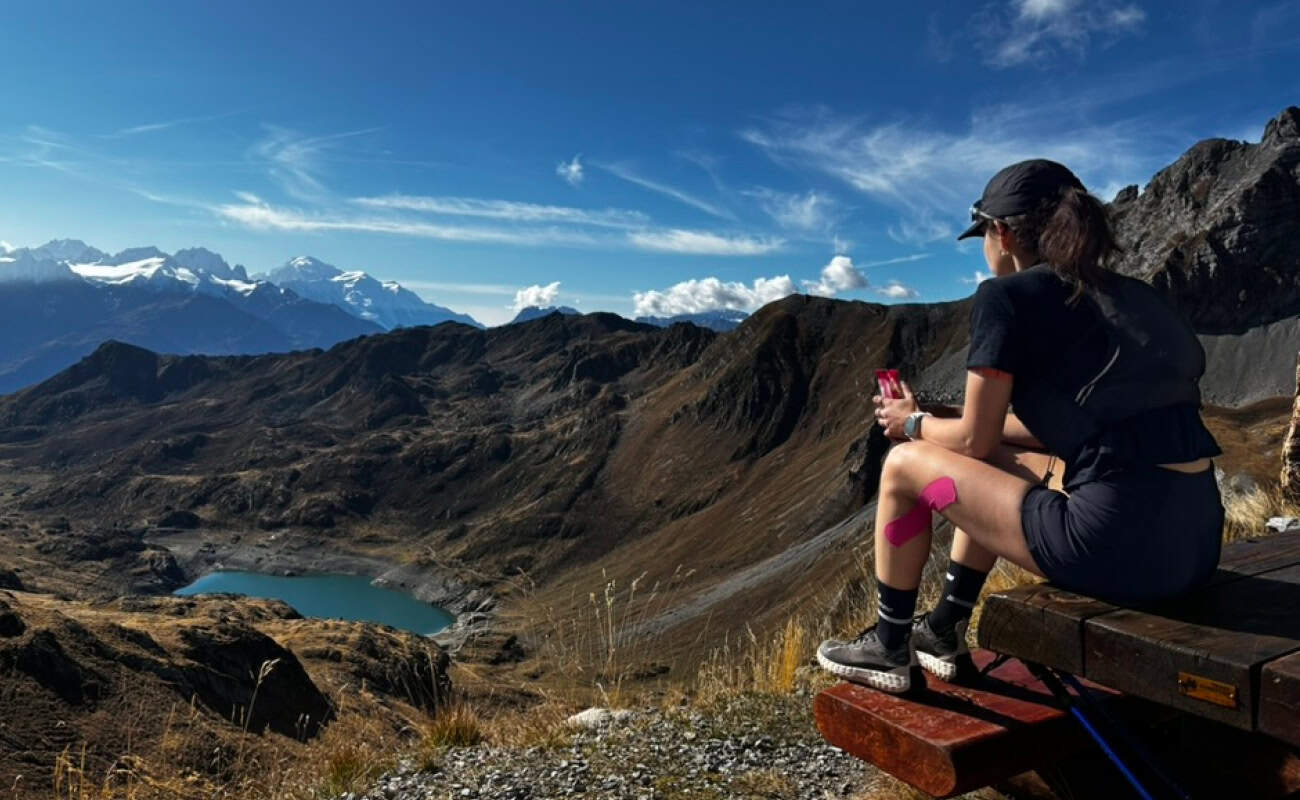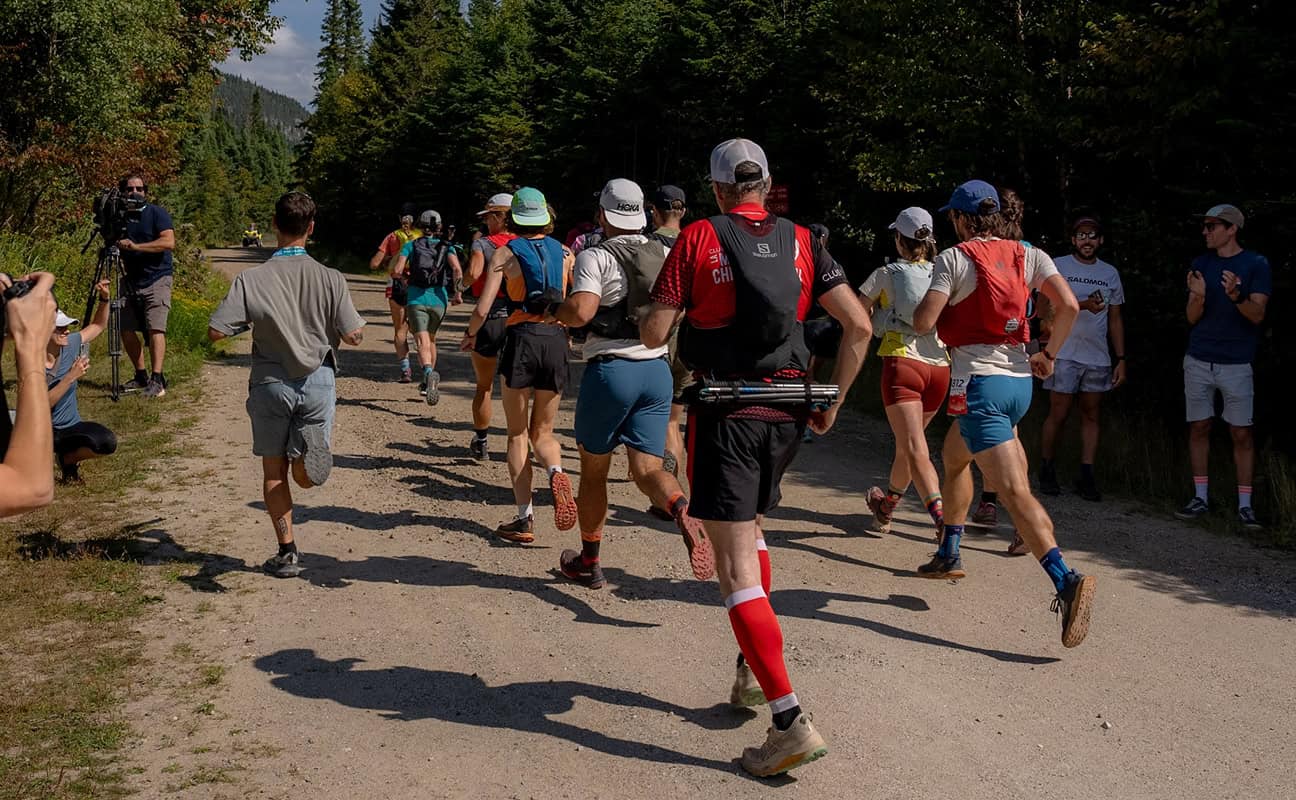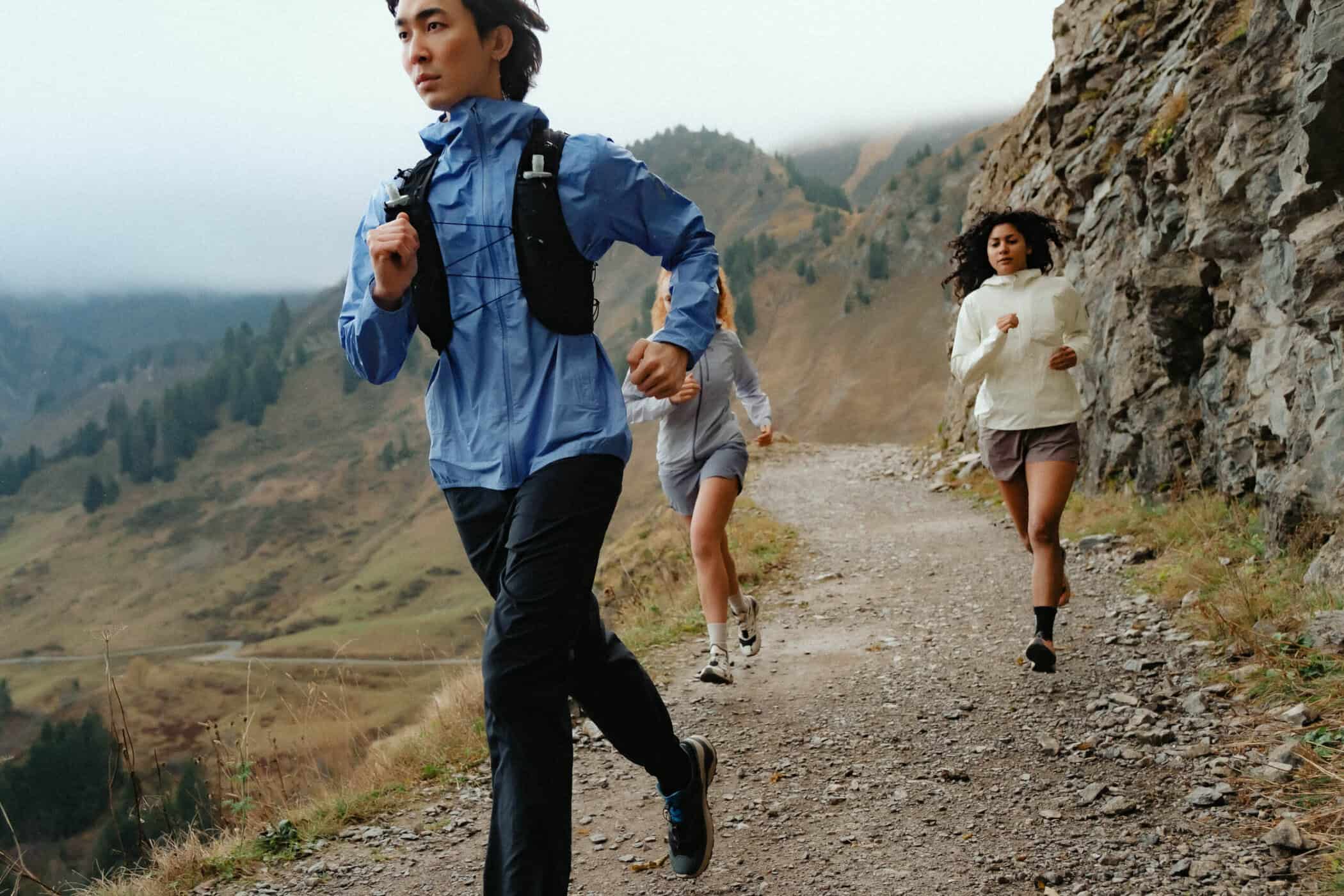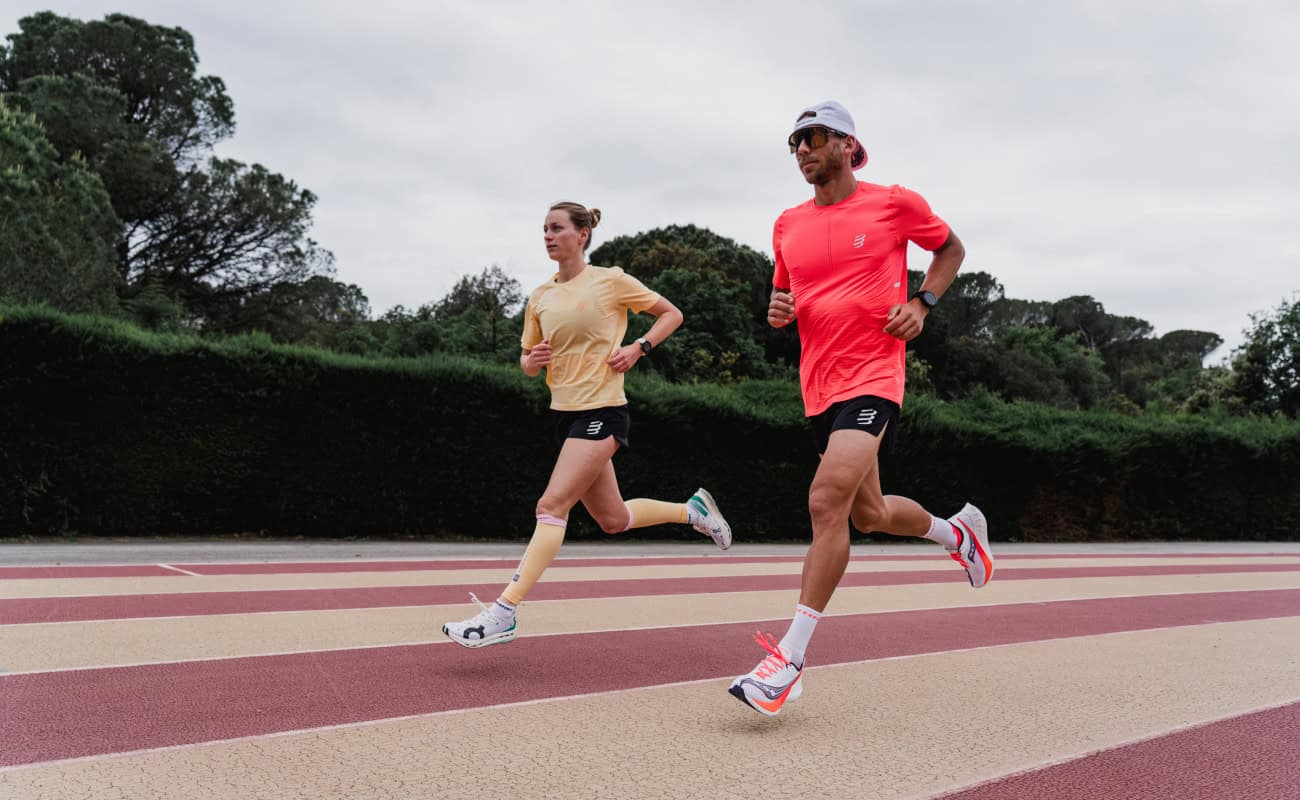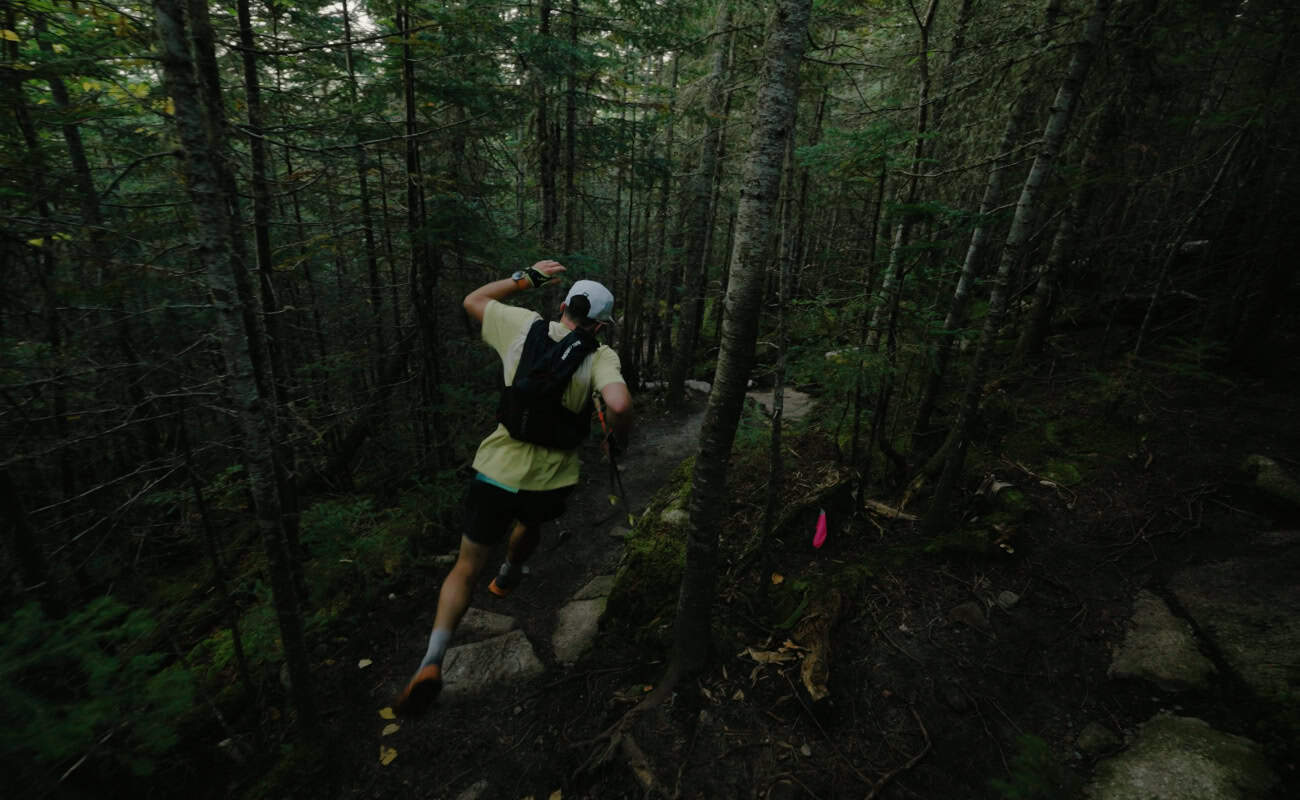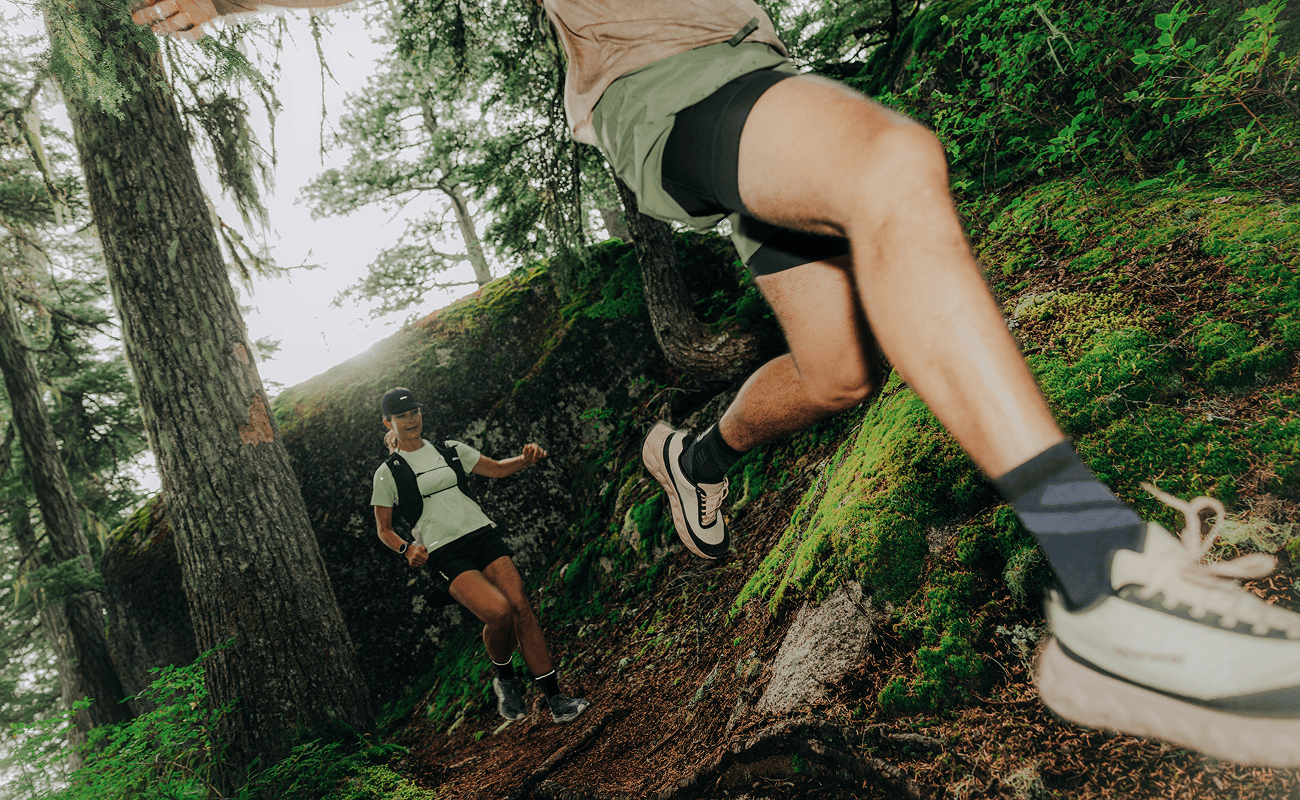
Meet Maika
Maika Lamoureux has been a runner since high school, a triathlete since CEGEP, and now an ultra runner while she pursues her PhD. But for her, success as an athlete goes beyond the trails and pathways—it’s a balancing act that touches several aspects of life.
With distances ranging from 10Ks to over 150 kilometres, unpredictable terrains that test your footing, and the challenge of chasing the last light of day before plunging into the night, trail running can feel like a physical beast compared to its road counterpart.
Trail runs demand both body and mind. Whether you’ve earned the “ultra” badge or are trading pavement for trails for the first time, we’re sharing insights from Maika Lamoureux, an accomplished ultra-runner and our ambassador. She’s breaking down her personal strategies for training, prep, nutrition, and mental readiness to conquer your next race day.
Mind Over Matter: Pre-Race Mindset
If you’ve just registered for your next big trail race, congratulations on pushing yourself to take on something incredible. Trail running can be daunting, but don’t be discouraged. What matters is feeling proud about what you’ve initiated and looking forward to the journey and race day.
Before we get into training, we want to help you get into the right headspace.
Set Goals and Expectations
You know yourself best. If you’ve just signed up for a race, start by setting realistic goals—like a target pace or completion time. These expectations can ease anxiety and help you outperform your own expectations on race day.
Positive Mindset
Race day jitters can occur. Maika, a professional runner, isn’t immune either. She helps free the butterflies with a 30-minute easy shakeout run the day prior to her race. Not only can it reduce pre-race stress, it helps your body warm up before the trail running event, which can boost your performance.
Socialize
Some runners thrive solo, and that’s fine. For others, like Maika, connecting with the running community kept her training on track. Plus, you might make friends along the way. Today, Maika has a coach she can lean on for encouragement leading up to her races. Having a group, coach, or accountability partner can keep you focused right up to race day and even during the race itself. Convince someone to join you for the race—this way, you’ll follow a shared routine and motivate each other!
Apps like Strava have evolved into social hubs as much as training tools. Explore local clubs or rope in a friend to keep you both accountable.
Build a Smart Training Plan
Create a plan that suits your needs. Overtraining is a common pitfall. As a beginner trail runner, you might want to start with 3 runs per week. More intermediate runners will commit to 4 days of running a week while professionals can do 5. For your trail running training plan, you’ll be mixing in a variety of hill sprints, tempo runs, and fartleks in addition to easy runs.
Applications
Even if you’re new to running, you might be amazed at how quickly you can progress from 2,000 daily steps to completing a half-marathon trail run in just a few short months. Apps like C25K or Runna offer tailored programs for all levels, from beginner to ultra-marathoner. Runna in particular can help create a personalized program for your next trail race and incorporate hill work into your weekly workouts.
There are several to choose from that are compatible with most smartwatches. Test them out and see which is right for you.
Strength Training
A lot of people might assume running means they can skip leg day. Nuh-uh. If you hope to see the best improvements and reduce your chances of injury, you’ll want to incorporate at least 2 days a week of strength training to accompany your running sessions.
Full-body workouts for your two days of weight lifting are a great all-around option. For your leg exercises, focus on single-leg workouts like lunges, squats, or step-ups. Maika encourages other runners to utilize the gym’s stairmaster as another way to build up leg muscles and endurance.
Don’t forget to stretch after every workout and run.
Fuelling Your Body Right
Starting a training plan means fuelling your body to match the demand—nutrition is foundational to your performance. Most runners break this down into three macronutrients: carbohydrates, fats, and proteins.
Carbs First
As a runner, carbohydrates are your primary fuel source. They’re metabolized most efficiently, making them critical for energy. You’ve likely heard of “carb-loading”—a strategy where runners increase carb intake days before race day to maximize glycogen stores.
Maika’s go-tos before race day include vegetarian sushi, her grandmother’s maple fudge, rice, tuna, and pastries. However, she avoids acidic foods, which can disrupt her digestion. It’s important to recognize your dietary needs and restrictions.
For longer races, like the 50K ultras that Maika runs, it’s important to bring solid proteins as well, like bars. Proteins slow the digestion of carbohydrates, which benefit ultra runners.

Personalize and Test
Everyone’s body reacts differently, so build a meal plan that suits you. Maika tests fuelling strategies during training runs to find what works. An error she’s since corrected is avoiding having more than one coffee before a race—excessive caffeine once led her to bunk during her race. Experiment, adapt, and prepare accordingly.
Gear Checklist
Between all the planning and training, you need the trail running apparel and gear to support you leading up to race day and on race day itself. Below is a breakdown of Maika’s trail running essentials, and the bits and baubles she brings along for every race
Tops
Maika recommends a top that can breathe well, but is also comfortable. It’s really up to the runner’s preference. Anything but cotton.
For women, you’ll also want a sports bra. Something not too restrictive, but also breathable and moisture-wicking is your best bet for a trail race.
Bottoms
For trail running, prioritize shorts with a full range of motion—your legs need to breathe and move freely, no matter the terrain. Maika prefers airy, loose-fitting styles. Opt for weather-resistant fabric to handle sudden rain or mud, and score bonus points if they have pockets for stashing gels or bars.
Jackets
For unpredictable conditions, a reliable jacket is essential—especially since some trail races require one. Invest in a lightweight, windproof, and waterproof shell. Easy compactibility can be useful for storing it on your person during the race.
Shoes
Naturally, you’ll need trail shoes to accompany you out there. Choose your pair thoughtfully—some avoid breaking in new shoes pre-race, but Maika doesn’t mind. If you’re inclined, swap your training shoes for your race-day pair to ensure familiarity. Discover what’s best for you.
Just remember: they must be trail shoes (not road shoes). For long distances, prioritize comfort over performance. Maika relies on norda 001s for her long runs. These shoes feature a Megagrip outsole with aggressive lugs for grip, Dyneema fibre for durability and a weightless feel, Vibram SLE Foam for cushioning.
Watch
Your watch is a crucial companion during training and on race day—choosing the right one depends on key features. While both Garmin and Coros offer robust options, Coros has become a trail runner favourite for its intuitive GPS mapping, customizable training plans, and progress tracking, and long-lasting batteries. Garmin balances sport-specific lines with daily-use perks like smartphone syncing (texts, calls) and compatibility with third-party apps like Spotify and YouTube Music.
Vests and Belts
Trail races vary in distance, but for long efforts, opt for a vest or belt—your choice comes down to preference. Vests offer flask pockets, easy water access, and dedicated compartments for gels and gear. Maika, however, prefers a snug-fitting belt, noting that some models are deceptively spacious, holding flasks, emergency items, phones, earbuds, and essentials like pills or anti-chafe creams.
Maika’s Tip: Choose the smallest belt size that fits snugly without restricting movement—this minimizes bounce and ensures comfort during technical sections.
Water Bottle
Pair your belt or vest with a dependable water bottle—dehydration is a real risk, especially under the full afternoon sun. Maika prefers handheld bottles with straps and thumb loops for secure, one-handed access. Vest wearers can carry extra mLs via hydration bladders or external flask pockets, but avoid overloading litres that slow you down. Balance capacity with weight: lightweight hydration keeps you nimble on technical terrain.
Sunglasses
Sunglasses are essential for cutting glare, blocking UV rays, and shielding your eyes from trail debris. For enhanced visibility, Maika opts for Oakley glasses, whose unique Prizm lenses sharpen trail detail by boosting contrast on rocks, roots, and terrain shifts.
Whether you choose Oakley (a gold standard for sports eyewear) or another brand, prioritize secure, no-slip frames and impact-resistant materials. You don’t want to have to keep pushing them up during your run.
Other Strong Considerations
Additional essentials Maika recommends for your trail race kit:
- Hat: Useful for sun protection, sweat management, and preventing heat exhaustion.
- Ginger pills: Alleviate nausea from fatigue or GI distress.
- Vaseline: Prevents chafing and doubles as lip balm or wind protection.
- Salt pills: Replenish electrolytes lost through sweat.
- Hair elastics: For guys and gals with longer hair.
- Earbuds: Bluetooth or with a cord. Maika prefers corded but some races don’t allow corded. Check race rules for restrictions.
- Gels: Quick carb source during runs.
- Protein bars: Solid fuel for ultras; combine with carbs for long distances.
- Poles: Optional but favoured by some runners.
- Emergency kit: It should include an emergency space blanket and a whistle at the minimum.
- Duffel bag: Pack gear pre-race in a duffel bag.
Trail Running Checklist: What the Pros Bring on Every Run
Final Learnings from Maika
In the final days before your trail race, Maika shares some extra actionable insights to set you up for success.
Lay of the Land
If you’re detail-oriented, study the race logistics: elevation gain, terrain (muddy, hilly, shaded), and course difficulty. If nearby, scout the trail by hiking or practicing sections to gauge physical demands.
Eat and Sleep Well
Going back to nutrition, remember to prioritize carb and protein loading in the days prior. Many runners have a hard time getting a good night’s sleep before race day, so Maika recommends taking it easy a few days before. Get extra sleep, nap, and reduce stress where you can.
Don’t Worry Too Much About Pacing
Trail running is different from road running. You can set a time goal, but trail races prioritize distance and terrain over speed. Tune in to the earth beneath your feet and focus on steady form. If it’s your first trail race, be proud of the fact you’re here. Let this one accomplishment fuel your next ambitions.



